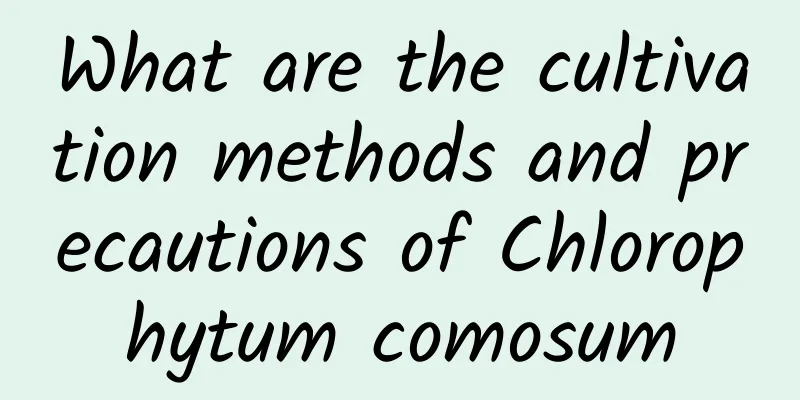What are the cultivation methods and precautions of Chlorophytum comosum

Introduction of Chlorophytum comosumChlorophytum comosum, also known as Thousand-leaf orchid, Thousand-leaf spider plant, and iron wire orchid, is a perennial evergreen shrub of the genus Chlorophytum in the Polygonaceae family. The plant grows in a hanging shape. The stem is reddish-brown and very slender. The leaflets are alternate, and the leaves are heart-shaped or round in shape. Cultivation method of Chlorophytum comosumChlorophytum comosum prefers a warm and humid semi-shady environment and is not resistant to high temperatures and strong sunlight. If the temperature is above 30 degrees in summer, it needs shade and cooling. It has a strong adaptability to soil, but it is best planted in loose, fertile, well-drained soil. Watering methodChlorophytum comosum grows vigorously in spring and autumn and has a greater demand for water, so it needs sufficient watering to keep the soil in the pot moist, but there should be no accumulation of water, otherwise the roots will rot if soaked in water for a long time. Spraying the branches and leaves with clean water frequently can make the leaves clean and full of vitality. Fertilization methodChlorophytum comosum has a greater demand for fertilizer. During the peak growing season, apply thin liquid fertilizer every 10-15 days with a low concentration. The plant enters a dormant period in winter and has less demand for fertilizer, so stop applying fertilizer. Pruning methodsAs the thousand-leaf spider plant grows, the yellow and old leaves at the base need to be cut off. In addition, the plant has a strong germination ability and grows fast, and it is easy to overflow the pot. Therefore, the potting soil needs to be changed every two years, and the roots can be trimmed when changing the pot. Precautions for growing Chlorophytum comosumIn summer and autumn, the leaves of Chlorophytum comosum often become yellow and wilt. They need to be moved to a semi-shaded place and sprayed with water on the leaves and the environment frequently to alleviate the problem. In addition, excessive watering will cause root rot. At this time, it is necessary to change the pot and soil in time and maintain it in a cool, humid, semi-shaded environment. Pay attention to spraying more water and watering less. |
<<: Can orchids be grown in coconut shells?
>>: What fertilizer is good for grapes?
Recommend
How to grow orchids to promote new buds
Awakening dormant buds When growing orchids, new ...
Snake fruit sowing and propagation method
Snake fruit seed propagation Seedling cultivation...
How to promote flower buds for Christmas cactus and what fertilizer to use to promote flower
1. Pruning branches and leaves If you want the Ch...
Why is it better to use soft water for watering flowers?
Natural water is divided into hard water and soft...
3 types of plants with antibacterial effects
Plants not only absorb substances through their l...
Cultivation methods and precautions of Livistona
1. Maintenance methods 1. Temperature: It likes t...
Tulip Flower Language
1. Flower Language There are many meanings of tul...
How to grow jasmine well
1. Lighting If you want to grow jasmine well, you...
How to care for mint in winter
Is mint afraid of freezing? Mint is not afraid of...
Cultivation methods and precautions of strawberry spider plant
1. Maintenance methods 1. Substrate selection: Wh...
How to Identify Trifolium pratense
1. Stem Trifolium leucoderma is a perennial herb ...
How to grow Serissa serrata in winter? Will it shed its leaves in winter?
1. How to keep it in winter 1. Increase sunlight:...
How much is the average yield of millet per mu? How much is the profit of planting millet per mu?
Millet yield per mu Millet is an important food c...
How many years does it take for Amomum villosum to bear fruit?
Introduction to Planting Amomum villosum Amomum v...
How often should I water the rain orchid?
How often should I water the rain orchid? General...









